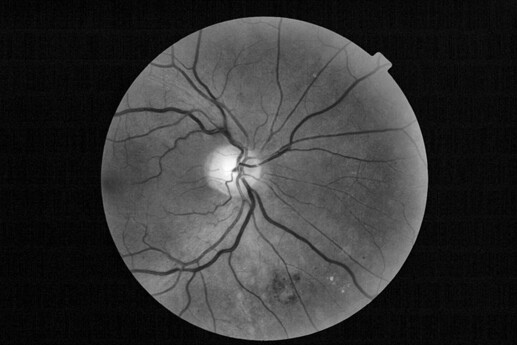Hello. I am trying to implement a paper which enhances images with bad contrast. For a fast prototyping I used MATLAB and got some results. After that, I implemented it by using OpenCV and C++. If I solve the problems I face in here, I am also going to implement it by using OpenCV’s CUDA module. When I run OpenCV version, I see that results are quite different and looks odd. What are my possible mistakes?
This is the MATLAB version
MATLAB Code
clc, clear, close all
InputImage = imread('C:\Users\batuh\Desktop\Tez\Literatür Taraması\Image_Processing\18_12_2020\Implementasyon\2018_Image Enhancement Methods For Fundus Retina Images_Gerekli_Dosyalar\e_ophtha_EX\e_optha_EX\EX\E0010643\DS00008G.JPG');
%Splitting green channel
InputImageGreenChannel = InputImage(:,:,2);
%Power law transform for alpha = 0.9
InputImagePowerLaw = uint8(1 * (double(InputImageGreenChannel).^(0.9)));
figure(1)
subplot(1,2,1),imshow(InputImageGreenChannel);
subplot(1,2,2),imshow(InputImagePowerLaw);
%Adaptive histogram equalization
InputImageHistEq = adapthisteq(InputImagePowerLaw);
figure(2)
subplot(1,2,1),imshow(InputImagePowerLaw);
subplot(1,2,2),imshow(InputImageHistEq);
%Normalizing
upperLim = max(max(InputImageHistEq));
lowerLim = min(min(InputImageHistEq));
InputImageContrastStreched = uint8((255 * double(InputImageHistEq - lowerLim))/double(upperLim - lowerLim));
figure(3)
subplot(1,2,1),imshow(InputImageHistEq);
subplot(1,2,2),imshow(InputImageContrastStreched);
%Average filtering
h = fspecial('average');
InputImageAverage = imfilter(InputImageContrastStreched, h);
figure(4)
subplot(1,2,1),imshow(InputImageContrastStreched);
subplot(1,2,2),imshow(InputImageAverage);
%Image sharpening
InputImageSharpened = imsharpen(InputImageAverage);
figure(5)
subplot(1,2,1),imshow(InputImageAverage);
subplot(1,2,2),imshow(InputImageSharpened);
%Log transform
InputImageLog = 1 * log(1 + double(InputImageSharpened)/255);
figure(6)
subplot(1,2,1),imshow(InputImageSharpened);
subplot(1,2,2),imshow(InputImageLog);
figure(7)
subplot(1,2,1),imshow(InputImageGreenChannel);
subplot(1,2,2),imshow(InputImageLog);
This is the OpenCV C++ version
OpenCV Code
#include <iostream>
#include <opencv2/opencv.hpp>
#include <opencv2/core/core.hpp>
#include <opencv2/highgui/highgui.hpp>
#include <opencv2/intensity_transform.hpp>
#include <opencv2/imgproc.hpp>
#include <string>
#include <opencv2/photo.hpp>
int main()
{
std::string inputImagePath = "C:\\Users\\batuh\\Desktop\\VS_2017_Projects\\Sabri_2018\\x64\\Release\\DS00008G.jpg";
cv::Mat inputImage = cv::imread(inputImagePath);
//Check if input image was successfully read or not
if (inputImage.empty() == 1)
{
std::cout << "Couldn't read the image: " << inputImagePath << std::endl;
return EXIT_FAILURE;
}
else {
std::cout << "Input image was successfully read..." << std::endl;
}
//Split input image into R, G, B channels
cv::Mat inputImageChannels[3];
cv::split(inputImage, inputImageChannels);
cv::Mat inputImageR = inputImageChannels[2];
cv::Mat inputImageG = inputImageChannels[1];
cv::Mat inputImageB = inputImageChannels[0];
std::cout << inputImageG.at<float>(225, 445) << std::endl;
inputImageG.convertTo(inputImageG, CV_8U);
std::cout << static_cast<int>(inputImageG.at<uchar>(225, 445)) << std::endl;
//Power Law Transformation
cv::Mat inputImagePowerLaw;
cv::intensity_transform::gammaCorrection(inputImageG, inputImagePowerLaw, 0.9);
cv::imshow("Input Image G Channel", inputImageG);
cv::imshow("Power Law Image", inputImagePowerLaw);
cv::waitKey(0);
/////////////////////////////////////////////////////////////////////////////////////
//Adaptive Histogram Equalization
cv::Mat inputImageHistEq;
cv::Ptr<cv::CLAHE> claheHistEq = cv::createCLAHE();
claheHistEq->apply(inputImagePowerLaw, inputImageHistEq);
cv::imshow("Power Law Image", inputImagePowerLaw);
cv::imshow("CLAHE Image", inputImageHistEq);
cv::waitKey(0);
/////////////////////////////////////////////////////////////////////////////////////
//Image normalization
cv::Mat inputImageNormalized;
cv::normalize(inputImageHistEq, inputImageNormalized, 0, 255, cv::NORM_MINMAX, -1, cv::noArray());
cv::imshow("CLAHE Image", inputImageHistEq);
cv::imshow("Contrast Strecthed Image", inputImageNormalized);
cv::waitKey(0);
/////////////////////////////////////////////////////////////////////////////////////
//Image filtering 1: Average
cv::Mat inputImageAverage;
cv::GaussianBlur(inputImageNormalized, inputImageAverage, cv::Size(3, 3), 0, 0);
cv::imshow("Contrast Strecthed Image", inputImageNormalized);
cv::imshow("Average Image", inputImageAverage);
cv::waitKey(0);
/////////////////////////////////////////////////////////////////////////////////////
//Image filtering 2: Sharpening
cv::Mat inputImageSharpened;
cv::Mat sharpeningKernel = (cv::Mat_<double>(3, 3) << 0, -1, 0, -1, 5, -1, 0, -1, 0);
cv::filter2D(inputImageAverage, inputImageSharpened, -1, sharpeningKernel);
cv::imshow("Average Image", inputImageAverage);
cv::imshow("Sharpened Image", inputImageSharpened);
cv::waitKey(0);
/////////////////////////////////////////////////////////////////////////////////////
//Log Transform
cv::Mat inputImageLog;
cv::intensity_transform::logTransform(inputImageSharpened, inputImageLog);
cv::imshow("Input Image", inputImageG);
cv::imshow("Enhanced Image", inputImageLog);
cv::waitKey(0);
return 0;
}
OpenCV Results







Order of result images in each version,
- Green channel
- Power Law result
- Adaptive Hist eq result
- Normalized image result
- Average image result
- Sharpened image result
- Log Transform image result








